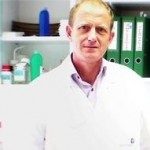Link to Pubmed [PMID] – 20950578
Biol Aujourdhui 2010;204(1):71-80
Rabies is a fatal disease transmitted by infected animals by bite, scratch, licking on broken skin or contamination of mucosis by saliva. The regimen of post-exposure prophylaxis for people not previously vaccinated, that is currently recommended by WHO, consists of a combination of wound cleaning, active immunization and passive immunization when the exposure is of category 3. Most of the products available on the market, in particular human rabies immunoglobulins, highly purified equine rabies immunoglobulins and the derived F(ab’)(2) fragments, are now characterized by high potency and safety. Although the interest of passive anti-rabies immunization was first demonstrated in the first half of the 20th century, there is still an inadequate supply of these products to the target populations mostly in developing countries. Therefore, it is urgent to set-up training and information actions for healthcare personnel on the need to use passive immunotherapy and the lack of adverse effects of the related products. For the future, we hope that a scale up of production and a lower price will improve the accessibility to these products. The development of new products based on monoclonal antibodies and molecular biology, and which may be cheaper, is promising.


